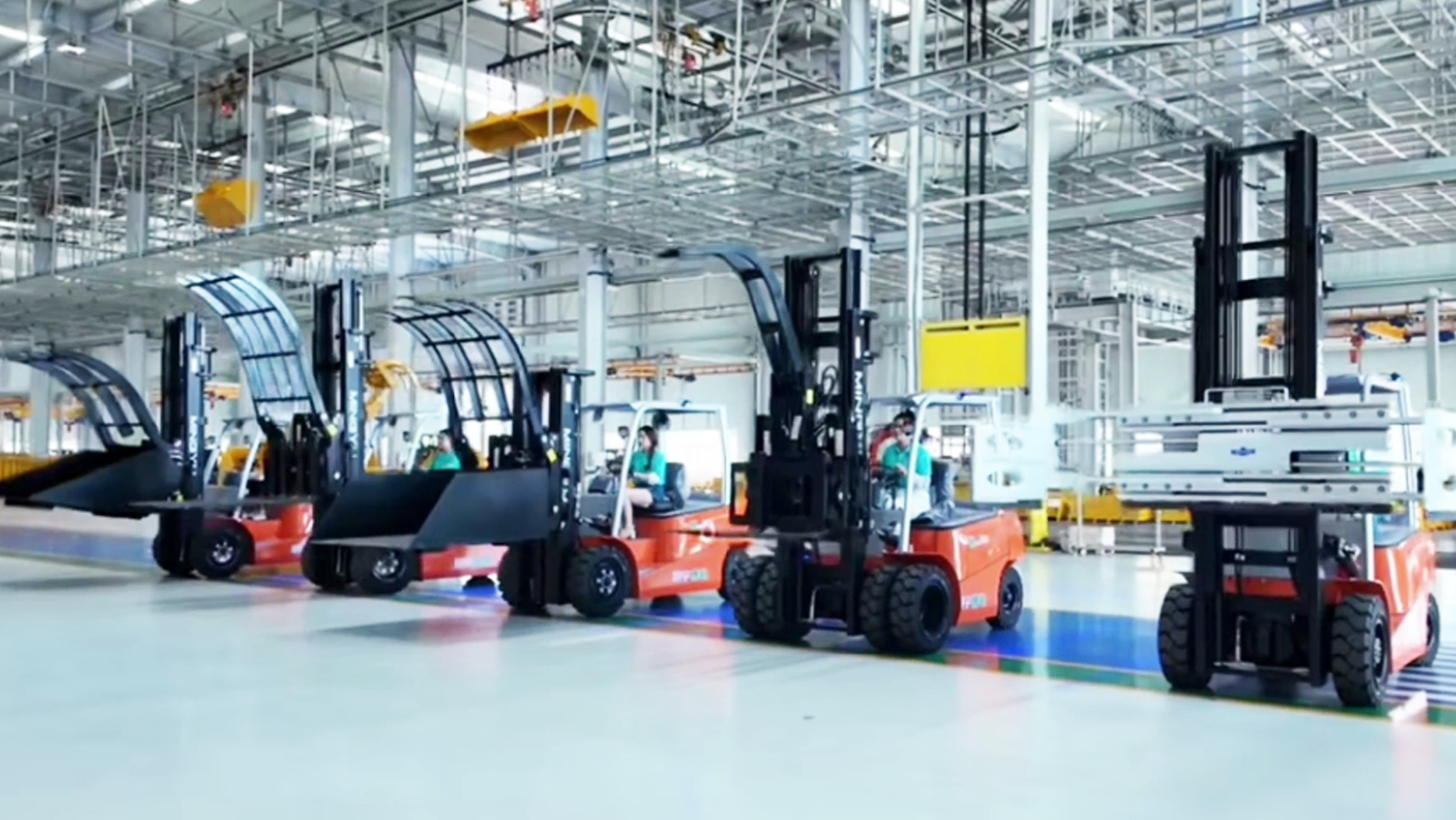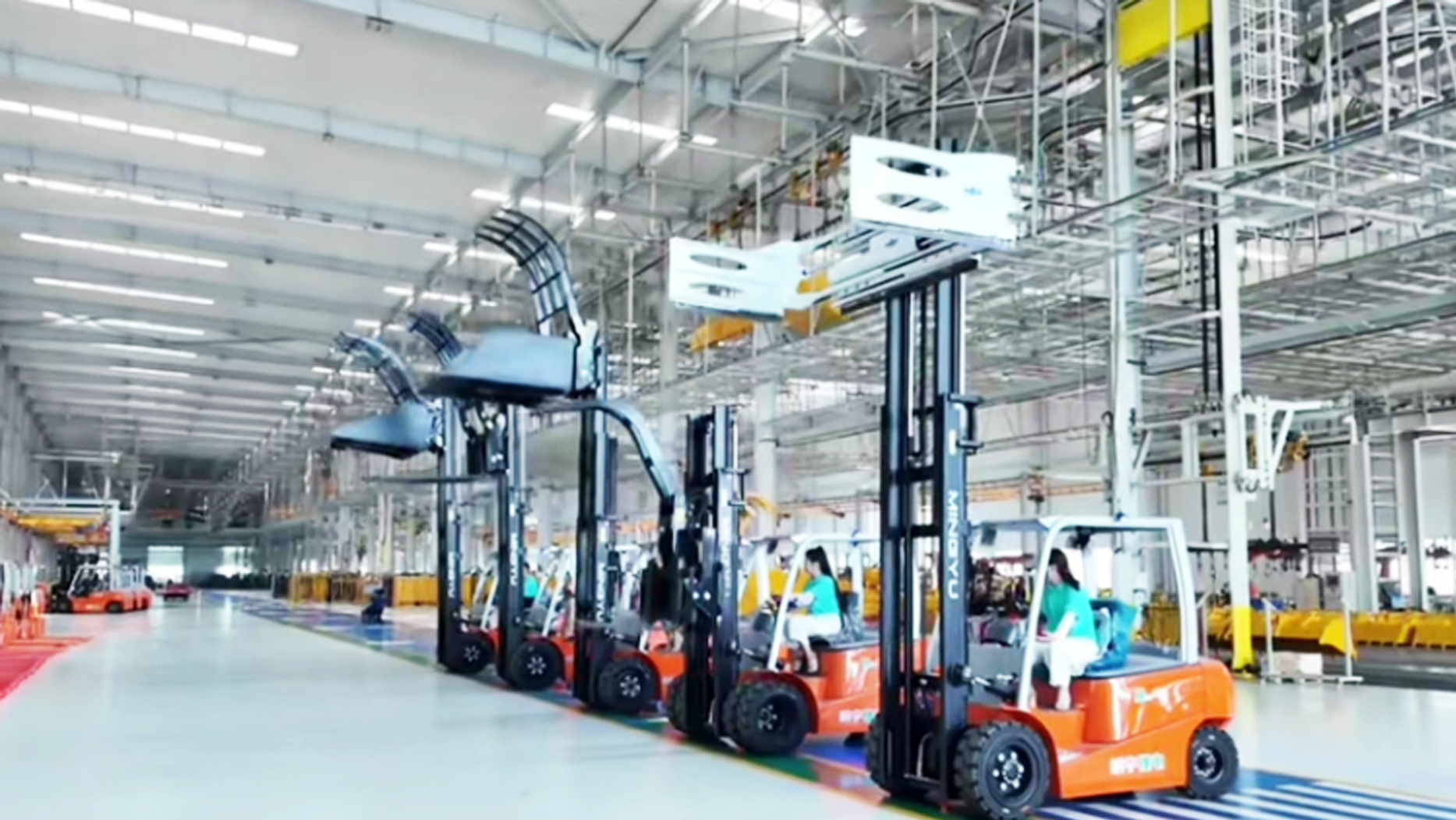In today's increasingly eco-conscious world, businesses are under growing pressure to reduce their carbon footprint and adopt more sustainable practices. For industries heavily reliant on material handling, the choice of forklift — specifically between traditional internal combustion (IC) models like diesel forklifts and modern electric forklifts — becomes a significant part of their environmental strategy. The question "Are electric forklifts better for the environment?" is often met with a resounding "yes," but the full answer involves a deeper look into their operational emissions, energy sources, and overall lifecycle impact.
While the immediate benefits of zero tailpipe emissions make electric forklifts appear as the clear environmental champion, a comprehensive assessment requires considering the entire energy chain, from electricity generation to battery disposal.
The Immediate Advantage: Zero Tailpipe Emissions
The most compelling argument for the environmental superiority of electric forklifts lies in their operation.
No Direct Emissions: Unlike diesel forklifts or LP gas models, electric forklifts do not produce any exhaust fumes during operation. This means:
No Carbon Monoxide (CO): A highly toxic gas.
No Nitrogen Oxides (NOx): Contributors to smog and acid rain.
No Particulate Matter (PM): Microscopic particles that can cause respiratory and cardiovascular problems.
No Unburned Hydrocarbons: Precursors to ground-level ozone.
No Carbon Dioxide (CO2): A primary greenhouse gas, directly emitted at the point of use.
Improved Air Quality: The absence of these pollutants dramatically improves air quality in enclosed spaces like warehouses, manufacturing plants, and distribution centers. This creates a healthier and safer working environment for employees, reducing the need for extensive ventilation systems.
Reduced Noise Pollution: Electric forklifts operate much more quietly than IC models. This not only improves the working environment for operators and other personnel but also reduces noise impact on surrounding communities, particularly for outdoor operations in urban or residential areas. While not a direct emission, noise pollution is a significant environmental concern.
This "zero-emission at the point of use" characteristic makes electric forklifts the undeniable choice for indoor applications and for companies seeking immediate, tangible improvements in local air quality.

The Broader Picture: Energy Generation and Lifecycle Impact
While operationally cleaner, the true environmental impact of electric forklifts hinges on where their electricity comes from and the lifecycle of their batteries.
1. The Energy Source: Where Does the Electricity Come From?
Grid Dependency: The environmental friendliness of an electric forklift is directly tied to the energy mix of the electrical grid it charges from.
Renewable Energy Sources (Solar, Wind, Hydro): If your facility charges its electric forklifts using electricity generated from renewable sources, then the overall environmental footprint is significantly reduced, potentially nearing true "zero emissions" across the entire energy chain.
Fossil Fuel-Based Grids: If the electricity comes predominantly from coal-fired power plants, for example, then the emissions are simply shifted from the forklift's tailpipe to the power plant's smokestack. While central power plants might be more efficient at burning fossil fuels and have better emission control technologies than individual forklift diesel engines, the emissions still exist.
Decoupling Emissions: Electric vehicles offer the advantage of "decoupling" emissions. As the grid becomes greener over time with more renewable energy integration, the environmental footprint of existing electric forklifts automatically improves without any further action needed from the end-user. This is not the case for diesel forklifts, which will always produce tailpipe emissions regardless of how clean the fuel production becomes.
2. Battery Production and Disposal: The Hidden Footprint
Manufacturing Impact: The production of forklift batteries, especially large lead-acid and lithium-ion packs, is energy-intensive and requires significant raw materials (lead, lithium, cobalt, nickel). The mining and processing of these materials have their own environmental impacts, including habitat disruption, water usage, and energy consumption.
Disposal and Recycling:
Lead-Acid Batteries: Highly recyclable (over 99% in many regions). Established recycling infrastructure means most lead is recovered and reused. However, improper disposal can lead to lead contamination.
Lithium-Ion Batteries: Recycling infrastructure is still developing but is improving rapidly. Recovering materials from lithium-ion batteries is more complex than for lead-acid, but significant efforts are underway to make it more efficient and cost-effective. Improper disposal can lead to environmental contamination and fire risks.
Overall: The goal is to establish a closed-loop system where battery materials are continuously recycled, minimizing the need for new raw materials and reducing landfill waste.

Comparing Against Diesel Forklifts
While modern diesel forklifts (including those from manufacturers like MINGYU FORKLIFT) have made significant strides in reducing emissions through advanced engine technologies (e.g., Tier 4 Final/Stage V compliance, DPF - Diesel Particulate Filters, SCR - Selective Catalytic Reduction requiring DEF), they still:
Produce Tailpipe Emissions: Even with advanced controls, they emit CO2, NOx, and PM, albeit in reduced quantities compared to older models.
Generate Noise and Vibration: Contribute to noise pollution and operator fatigue.
Require Fossil Fuels: Reliance on finite fossil fuel resources.
Fuel Spills: Risk of diesel fuel spills during refueling and storage.
Other Environmental Considerations
Energy Efficiency: Electric forklifts generally convert a higher percentage of their input energy into useful work compared to internal combustion engines, which lose a lot of energy as heat. This makes them inherently more energy-efficient.
Waste Streams: Electric forklifts produce fewer waste streams (no oil filters, fuel filters, spark plugs, engine oil changes) compared to diesel forklifts. This simplifies waste management and disposal.
Long-Term Trend: The global trend is towards decarbonization of electricity grids and increased battery recycling. This means the environmental benefits of electric forklifts are likely to grow over time, whereas the environmental impact of diesel forklifts is largely fixed (though they may become more regulated).
 The Verdict: Electric Forklifts are Generally More Environmentally Friendly
The Verdict: Electric Forklifts are Generally More Environmentally Friendly
Considering the full picture, electric forklifts are generally better for the environment than diesel forklifts, particularly when:
Operating Indoors: Zero tailpipe emissions directly improve indoor air quality and worker health.
Using Renewable Energy: Charging from a grid powered by renewables makes them a truly low-carbon solution.
Factoring in Continuous Grid Decarbonization: Even with a fossil-fuel reliant grid today, the environmental profile of an electric forklift will improve as the grid gets cleaner.
Considering Noise Pollution: Quieter operation is a significant environmental and operational benefit.
Looking at Lifecycle Waste: Fewer operational waste streams.
While the environmental impact of battery production and disposal cannot be ignored, advancements in recycling technologies are mitigating these concerns. The shift towards electric forklifts represents a clear step forward in reducing localized pollution and contributing to broader decarbonization efforts in the material handling industry.
For businesses looking to make a concrete commitment to sustainability and improve their environmental performance, choosing an electric forklift over a diesel forklift is a strategic decision that aligns with global environmental goals and can often lead to long-term operational savings due to lower running costs and maintenance needs. Manufacturers like MINGYU FORKLIFT offer both types, allowing businesses to choose the best option that balances their operational demands with their environmental aspirations.
Post time:Jul.08.2025
